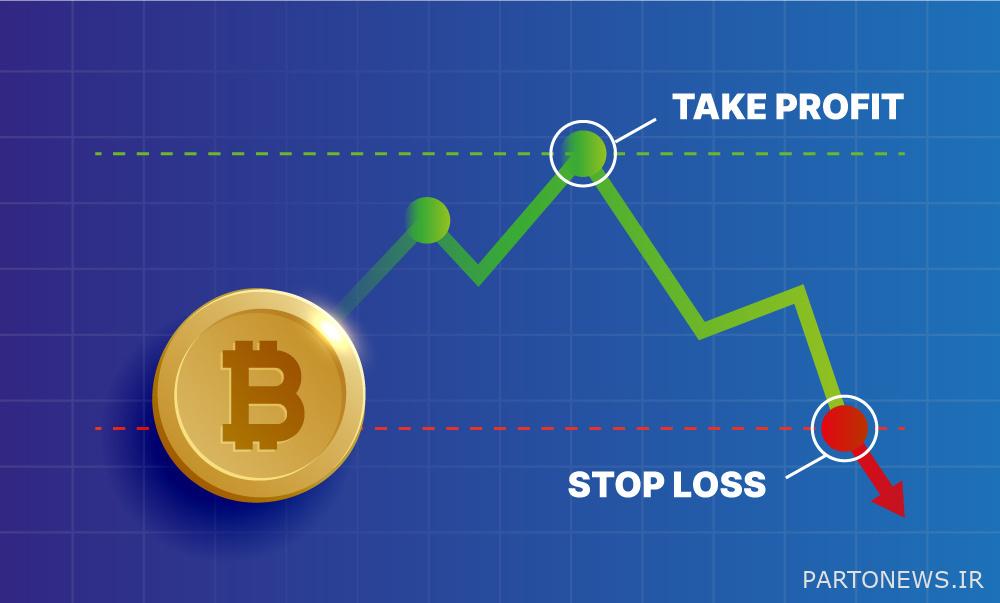Familiarity with 5 risk management strategies in digital currencies

Risk management is an important part of responsible investment. In fact, risk management strategies can reduce the overall risks of your investment portfolio in various ways. For example, an example of a less complex strategy is to diversify your investment options or execute stop loss and take profit orders at the right time.
Obviously, investors and traders seek to minimize risk; Even if they are very risky. Do not forget that risk management is a more important criterion than choosing low-risk transactions or investments.
There is a comprehensive set of risk management strategies, some of which are suitable for beginners. In this article, we intend to introduce 5 simple yet effective risk management strategies in the digital currency market; But before that, we will examine the concept of risk management in more detail. We invite you to stay with us until the end of this article.
What is risk management?
Risk management means predicting and identifying financial risks related to investment with the aim of minimizing them. Investors use risk management strategies to help their portfolios. The first important step in this type of strategy is to assess the current risks and then create effective plans to deal with them.
Meaning of risk management strategies
Risk management strategies are strategic plans and actions that traders and investors take after identifying their investment risks. Applying appropriate strategies can reduce the overall risk of investment and loss of capital. It is worth noting that these strategies are not limited to a specific asset and can cover a wide range of financial activities.
Read more: How is risk management in the digital currency market?
Some of these measures include loss insurance and portfolio diversification by investing in different asset classes. In addition to using risk management methods, planning in this field is also very important. Next, we mention some general approaches in risk management planning.
General approaches to risk management planning
- the reception: In this approach, the investor accepts the risk of investing in the property; But it does not spend any money or special program to prevent it; Because he does not consider the potential loss to be too great.
- the transfer: Transferring investment risk to a third party by paying a fee or using insurance. A clear example of this method is car insurance. The car owner transfers the risk of the accident to a third person or organization by paying a specific fee, and in case of an accident and damage, it is the insurance company that compensates the car owner.
- avoid: Not investing in potentially risky assets.
- Risk reduction: Reducing the risk of risky investment by diversifying the portfolio. Diversification can be done by buying within the same asset class or even across different industries and assets.
Why is it important to have a risk management strategy?
Digital currency is considered a risky asset for investors. What has been proven in this market is that prices are volatile and projects can collapse overnight. Additionally, blockchain technology and infrastructure can be difficult and even confusing for newcomers.
Having said that, it is necessary to use the correct risk management methods and strategies to reduce potential risks. In fact, this move is an essential step to becoming a successful and committed trader. Next, we will learn about 5 important strategies in risk management.
The first strategy: the one percent rule
The one percent rule is a simple risk management strategy. According to this strategy, the investor does not risk more than 1% of his total capital in a transaction or investment. Let’s say you as an investor have $10,000 to invest and you want to stick to the 1% rule.
There are two simple ways to follow this strategy:
The first method is to buy $10,000 of Bitcoin (BTC) and set a Stop-Loss or Stop-Limit to sell at $9,900. In this case, you reduce your loss to 1% of your total investment ($100).
Read more: What are limit order and stop-limit in digital currency exchanges?

In the second method, you can buy $100 of Ether (ETH) with your $10,000 holdings without setting a stop loss order. Therefore, if the Ethereum price ever reaches zero, you will only lose 1% of your total capital. In fact, the 1% rule does not affect the size of your investment; Rather, it will affect how much you are willing to risk in investing.
The 1% rule is very efficient for digital currency users due to market fluctuations; Because in this volatile market, traders get greedy easily. Some investors may put a large amount of their capital in a trading position and suffer heavy losses by being overly optimistic about the price trend in the future.
The second strategy: determining stop loss and profit points
In a Stop-Loss order, a specific price is set for the asset to close the position. The stop loss price is set below the current price and when activated, it helps prevent further losses. On the other hand, the Take-Profit order works in the opposite way; Because you have to set a price higher than the current price at which you intend to close your position and take your profit.

Stop loss and take profit orders help you manage your risk from two different perspectives: 1. These limits can be preset to run automatically. Also, you don’t need to be available 24 hours a day as a trader; because if the prices are unstable and fluctuating, the predetermined limits will be activated; 2. This option allows you to set real and actual limits for your potential losses and profits.
You should pay attention to the fact that it is better to determine these limits in advance, not in times of crisis and anxiety! It may seem strange to you to consider profit taking orders as part of your risk management; But you should not forget that the longer you wait to make a profit and increase the prices, the risk of the market falling increases.
The third strategy: Diversification and risk coverage (Hedging)
Diversifying the portfolio is one of the popular and essential tools to reduce the overall investment risk. A diversified portfolio does not focus on any particular asset or asset class. This diversification minimizes the risk of heavy losses. For example, you can have different types of digital currencies and tokens and at the same time provide liquidity and lending so that you don’t concentrate your capital in one place.
A hedging strategy is a more advanced method of preserving profits or minimizing losses by buying another type of asset. Usually, these assets have an inverse correlation with each other. Diversification can be a type of hedging strategy; But perhaps the most well-known example of hedging are futures contracts.
A futures contract allows you to lock in the price of an asset at a specific date in the future. For example, imagine that you believe that the price of Bitcoin will decrease; So, you decide to hedge against this risk and enter into a futures contract to sell Bitcoin for $20,000 in the next three months. If the price of Bitcoin actually drops to $15,000 three months from now, you will profit from your futures position.
It is worth mentioning that futures contracts are easily settled in exchanges. For example, in the example above, your counterparty pays you $5,000 (the difference between the cash and futures prices). In this case, you have been able to protect your capital against the risk of a fall in the price of Bitcoin. Don’t forget that diversification is much more important in the digital currency market than in more traditional financial markets with less volatility.
Fourth strategy: Have an exit strategy ready
Having an exit strategy is a simple but effective way to minimize the risk of heavy losses. By sticking to your strategy, you can make a profit by exiting at a predetermined point or at least minimize your loss.
Often, traders stay on track when they take a profit on a trade and don’t get too bullish on a particular cryptocurrency even when prices decline. Usually, getting caught up in market hype and idealism or being influenced by the opinions and decisions of other traders can confuse you in sticking to your exit strategy.
One of the ways to successfully implement an exit strategy is to use limit orders. You can set your order in such a way that whether you want to take profit or set the maximum loss, your order will be done at a certain price.
The fifth strategy: do your own research
Doing thorough research is another risk mitigation strategy in all investments. In the age of the Internet, research is easier than ever. Before investing in a token, digital currency, project or other asset, you should do your due diligence. It is important to check the essential information about the project; including white paper, project tokonomics, team and investors, road map, community and other fundamental concepts.
Read more: How to trade by reading news? Digital currency trading guide based on news
However, also remember that misinformation spreads quickly and anyone can present their own views as truth online. When researching, be careful where you get your information and how certain you are of its validity. Shilling or advertising for an empty and worthless project is common, and projects or investors can spread false or biased news or advertisements as if they are honest and true.
Conclusion
In this article, we have described five risk management strategies so that with their help you can reduce the risk of your portfolio. Even using these simple methods that cover most areas will help you invest more rationally. Do not forget that the 1% rule, setting limit orders, diversifying the portfolio, determining the exit strategy and conducting research about the project you are considering for investment should be your priority.
It should be said that risk management strategies are not limited to these five examples and there are more complex strategies that many professional traders use. However, applying these five relatively simple strategies can improve your trading performance more than expected.
Which strategies do you use to manage risk in your transactions?

